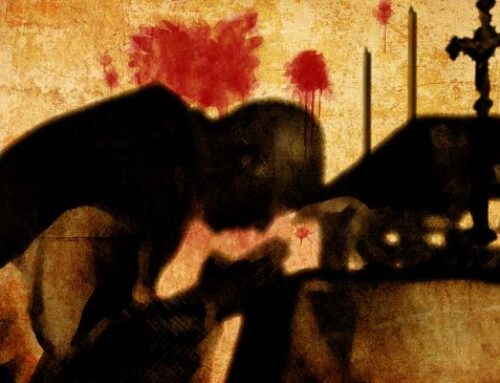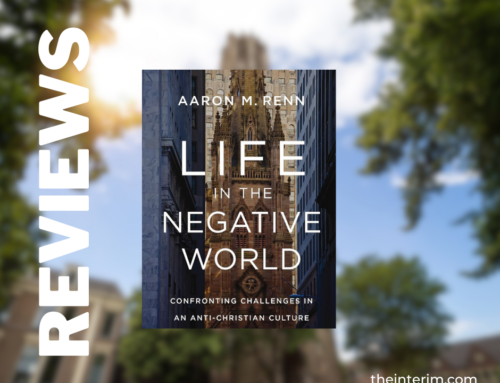 They still make Christmas movies, as far as I can tell, but we’re a long way from Bing Crosby and Rosemary Clooney singing Irving Berlin tunes for a war-weary generation. This Christmas, for instance, we have the very wry Bill Murray spoofing the holiday TV special in A Very Murray Christmas, and The Night Before, a seasonal buddy film where Seth Rogen, Joseph Gordon-Levitt and Antony Mackie binge their way through Christmas Eve; the trailer features a freaked out and drug-addled Rogen vomiting in the aisle at a packed midnight mass at St. Patrick’s Cathedral in Manhattan.
They still make Christmas movies, as far as I can tell, but we’re a long way from Bing Crosby and Rosemary Clooney singing Irving Berlin tunes for a war-weary generation. This Christmas, for instance, we have the very wry Bill Murray spoofing the holiday TV special in A Very Murray Christmas, and The Night Before, a seasonal buddy film where Seth Rogen, Joseph Gordon-Levitt and Antony Mackie binge their way through Christmas Eve; the trailer features a freaked out and drug-addled Rogen vomiting in the aisle at a packed midnight mass at St. Patrick’s Cathedral in Manhattan.
Like I said, we’re a long way from Bing Crosby.
Arguing about the best Christmas movies inevitably turns into a debate about the best version of A Christmas Carol, so I’m going to bluntly state that it’s Alistair Sim’s film, released in Britain as Scrooge.
I’m aware that other versions of the Dickens story have their followings, and while there are no doubt virtues in the Scrooges of Albert Finney, George C. Scott, Jim Carrey, Kelsey Grammar, Henry Winkler, Hoyt Axton, Patrick Stewart, Jack Palance, Susan Lucci, John Carradine, Fredric March, James Earl Jones, Cicely Tyson and the very busy Bill Murray, they are merely streams and tributaries that flow in and out of the great grimacing Ebenezer that Sim embodied with almost unseemly relish in director Brian Desmond Hurst’s 1951 film, which looks like a Victorian lithograph brought to life and tugs even more deftly at the heartstrings thanks to Richard Addinsell’s score.
There was a time in my life when Christmas day only began after I’d had a chance to screen the film, alone in the early winter night, bracing myself for the sobs when Sim’s face collapses from fear to contrition as he finally meets his nephew Fred’s pretty young wife, and begs her forgiveness for being hard-hearted.
A bachelor for too many years, I watched the film aware of how Scrooge-like I was becoming with every Christmas; I needed to ride through Dickens’ story with Sim for the catharsis-by-proxy necessary to face family and friends the next day, marking time till my own redemption.
I grew up with Sim as Scrooge, but I was an adult when I saw The Bishop’s Wife, a very low-key 1947 comedy starring Cary Grant, David Niven and Loretta Young. Henry Koster’s film, based on a novel by Robert Nathan, is full of the simmering anxiety and tentative optimism that radiates from American films made just after the end of World War II, as the victors wondered just what kind of world their sacrifice and triumph had created.
It stars Niven as an Episcopalian bishop obsessed with building a new cathedral at the expense of his spiritual and family life. Praying for guidance, he’s sent a very suave angel played – naturally – by Grant, who begins setting the bishop’s world in order over the course of a Christmas, though not with the construction of the cathedral as a goal. The angel also begins charming the bishop’s wife (Young) and discovers that he’s not without reciprocal feelings.
It’s a very adult film, but without the lurid connotations the word implies today; it’s a story about faith and temptation and responsibility that eschews excessive flourishes of high-minded morality. The film was re-made in 1996 as The Preacher’s Wife with Denzel Washington and Whitney Houston, but I still prefer Koster’s original, where the rich black and white cinematography seems to wrap around the actors and burnish their conflicted emotions.
There’s not much to recommend the modern Christmas film, and the best one of all is probably Groundhog Day starring the ubiquitous Bill Murray, which substitutes a wholly arbitrary media holiday to escape the tired trappings of the Christmas movie while telling a story about choosing virtue in an entirely original way. My guilty pleasure Christmas film, though, is the Bad Santa, a fantastically cruel 2003 comedy starring Billy Bob Thornton and Lauren Graham.
Thornton plays Willie, a lecherous alcoholic and thief whose modus operandi involves working as a mall Santa alongside his accomplice Marcus, a mean-spirited dwarf played by Tony Cox, in order to rob the place at leisure after the doors are locked on Christmas Eve. Director Terry Zwigoff was a one-man genre at the turn of the millennium, developing a kind of Cinema of Misanthropy with films like the documentary Crumb and his feature debut Ghost World.
There is nothing family friendly about Bad Santa or its “unrated” DVD release, Badder Santa. The characters are either pitiful or malevolent, the language unrelentingly profane, and the situations often perverse. What Zwigoff and Thornton have done, though, is create an update of Ebenezer Scrooge in the shape of Willie, a bitter cynic without even the facade of Victorian probity.
Instead of the pitiful lame boy Tiny Tim, Bad Santa gives us Thurman Merman, a pathetic fat boy who actually believes Willie is Santa, a hopeless magnet for mockery that Willie exploits on his way to the bottoming out and betrayal that actually ends up redeeming him – albeit in a hail of police bullets.
Sim’s Scrooge, heartless as he could be, was allowed his dignity at least in life; the sight of his possessions and reputation being pawed over after his death is one of Sim’s great emotional pivots in the 1951 film. And in The Bishop’s Wife the adults suffer doubt and temptation with nobility, wrestling with sin aware of the tragedy it invites.
Dignity and nobility are in short supply these days, onscreen and off, so I suppose that explains why our contemporary iterations of Dickens’ story have become so unconvincing. With Willie and Bad Santa, however, we’ve been given the Scrooge we deserve.




